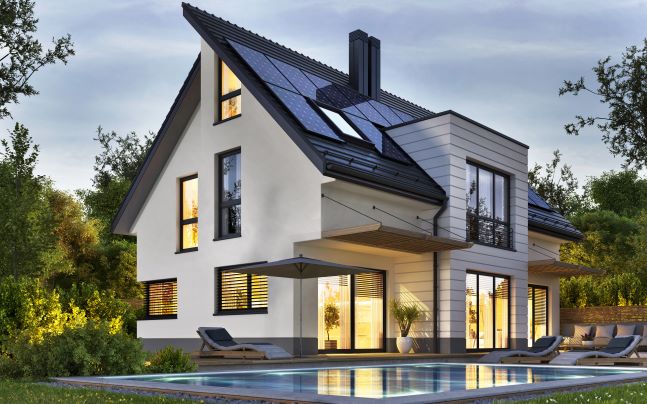Mark D’Antonio, Zondits staff, 2/28/2023
There is a growing mantra amongst climate change advocates to “electrify everything”; predicated on the assumption that the power generation mix will increasingly become cleaner as fossil fuel use declines and is replaced with low-carbon sources. The residential sector is one segment targeted to be “electrified” with burgeoning technologies such as heat pumps for space conditioning and water heating, induction cooking products, electric vehicle charging, and electric clothes drying, not to mention solar generation and battery storage.
One challenge that exists for homeowners incorporating these technologies is ensuring that the electric service to the home is adequate to support the higher power demands required by these systems (and that they are controlled properly). As we electrify our existing homes, and build new highly electrified homes, consideration needs to be given to safely supply adequate power with appropriate controls and for a reasonable cost.
Depending on the home, the existing electric service from the utility (as well as the electric panel in the dwelling) may be inadequate to support adding such new loads without some form of automated load management. In new construction scenarios, developing an all-electric home could result in substantial and costly electric service requirements if not planned well. In either case, as we add these large loads, it is desirable to minimize the electric service needed and optimize the level of control to manage energy consumption and limit demand. This is where smart panels enter the story.
Conventional electric panels have not changed much in the past 60 years and basically serve as a central wiring point in the home to provide electrical safety protection and facilitate manual circuit control. Smart panels provide these functions and substantially more – including that they are controllable from a smart phone app.
Smart electric panel technology is rapidly evolving and is available today from a small number of suppliers and will certainly be deployed more frequently in residential homes in the coming years. The list of capabilities and options with smart panels is quite long including house-level and circuit-level monitoring, peak load management, backup power circuit configuration and control, intelligent EV charging control, battery storage optimization, and in many cases, service upgrade avoidance. These capabilities equate to giving the homeowner a great ability to understand the total amount of energy their house consumes, as well as the contributions of each appliance or system to the overall demand. Further, the homeowner can set up scenarios to manage their energy use in a prioritized fashion during different circumstances. For example, for homes with backup power, during a power outage, circuits can be prioritized to serve critical needs. Or, perhaps a number of big electric loads exist such as heat pumps, electric appliances, a pool pump, and an electric vehicle (EV) charger. If all or some of those loads call for power simultaneously, the electric service may be unable to satisfy the load. A smart panel system can manage the loads automatically based on user inputs. Depending on the utility, it is also possible to set control scenarios that facilitate enrollment in demand response programs that pay incentives for curtailing usage when the utility grid is heavily loaded.
There are a couple of types of systems that have already hit the market or will be available soon. The first type are stand-alone panels that are installed in a similar manner to conventional electric panels, or as a smaller companion panel (targeted at only the larger loads in the home). Depending on the manufacturer, these panels either use standard circuit breakers or custom proprietary breakers. In either case, they include the “smart” technology to provide additional functionality relative to a conventional panel. These systems are well suited for new construction or situations where a panel upgrade is needed in an existing home.
The second type of system is not a stand-alone panel, but instead uses a distributed network of smart control devices that are connected to individual loads in the home. These devices are connected wirelessly to a central hub that then connects to the internet. With these systems one can pick and choose all, or only some, of the loads to monitor and control.
The equipment and installation costs of smart panel systems are highly variable depending on the type selected and the number of the loads to be controlled. The overall value of these systems will also depend on the given scenario and application. In some cases, the right smart system could easily pay for itself by avoiding a costly service upgrade from the utility company. This could hold true if the intent was to electrify the existing home with upgrades such as heat pumps or EV chargers, but the current service or panel wouldn’t support it without smart load control. In other cases, the payback might be longer but still attractive, particularly if the utility offers incentives for enrolling in a demand response program. Further, the homeowner’s definition of value may go beyond dollars and include the benefit of increased control of the home and lower consumption with reduced emissions.
Follow the links below for further information.
- Lumin smart
- SPAN® Panel
- Rewiring America article: Circuit Breaker: Electrification won’t break the grid, it will make it smarter
